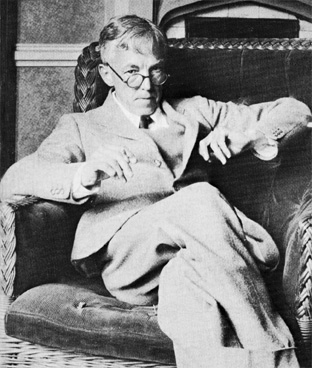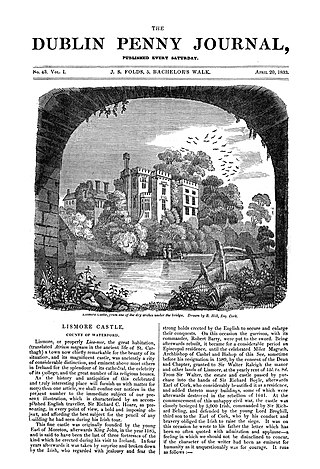
Godfrey Harold Hardy was an English mathematician, known for his achievements in number theory and mathematical analysis. In biology, he is known for the Hardy–Weinberg principle, a basic principle of population genetics.
The Sadleirian Professorship of Pure Mathematics, originally spelled in the statutes and for the first two professors as Sadlerian, is a professorship in pure mathematics within the DPMMS at the University of Cambridge. It was founded on a bequest from Lady Mary Sadleir for lectureships "for the full and clear explication and teaching that part of mathematical knowledge commonly called algebra". She died in 1706 and lectures began in 1710 but eventually these failed to attract undergraduates. In 1860 the foundation was used to establish the professorship. On 10 June 1863 Arthur Cayley was elected with the statutory duty "to explain and teach the principles of pure mathematics, and to apply himself to the advancement of that science." The stipend attached to the professorship was modest although it improved in the course of subsequent legislation.

Arthur Cayley was a prolific British mathematician who worked mostly on algebra. He helped found the modern British school of pure mathematics.

Pure mathematics is the study of mathematical concepts independently of any application outside mathematics. These concepts may originate in real-world concerns, and the results obtained may later turn out to be useful for practical applications, but pure mathematicians are not primarily motivated by such applications. Instead, the appeal is attributed to the intellectual challenge and aesthetic beauty of working out the logical consequences of basic principles.

James Whitbread Lee Glaisher FRS FRSE FRAS, son of James Glaisher and Cecilia Glaisher, was a prolific English mathematician and astronomer. His large collection of (mostly) English ceramics was mostly left to the Fitzwilliam Museum in Cambridge.

A Mathematician's Apology is a 1940 essay by British mathematician G. H. Hardy, which offers a defence of the pursuit of mathematics. Central to Hardy's "apology" – in the sense of a formal justification or defence – is an argument that mathematics has value independent of possible applications. Hardy located this value in the beauty of mathematics, and gave some examples of and criteria for mathematical beauty. The book also includes a brief autobiography, and gives the layman an insight into the mind of a working mathematician.

In geometry, the Malfatti circles are three circles inside a given triangle such that each circle is tangent to the other two and to two sides of the triangle. They are named after Gian Francesco Malfatti, who made early studies of the problem of constructing these circles in the mistaken belief that they would have the largest possible total area of any three disjoint circles within the triangle.

Norman Macleod Ferrers was a British mathematician and university administrator and editor of a mathematical journal.
Mousetrap is the name of a game introduced by the English mathematician Arthur Cayley. In the game, cards numbered through are shuffled to place them in some random permutation and are arranged in a circle with their faces up. Then, starting with the first card, the player begins counting and moving to the next card as the count is incremented. If at any point the player's current count matches the number on the card currently being pointed to, that card is removed from the circle and the player starts all over at on the next card. If the player ever removes all of the cards from the permutation in this manner, then the player wins. If the player reaches the count and cards still remain, then the game is lost.
W. Metcalfe and Son was a printer and publisher in Cambridge during the 19th and early 20th centuries. Its office has been located on Green Street, Trinity Street and St Mary's Street. A large number of books about Cambridge were published by W. Metcalfe and Sons during that era. In 1836, William Metcalfe was a contender for the printer of Cambridge University Press, but was defeated by John Parker.
The Messenger of Mathematics is a defunct British mathematics journal. The founding editor-in-chief was William Allen Whitworth with Charles Taylor and volumes 1–58 were published between 1872 and 1929. James Whitbread Lee Glaisher was the editor-in-chief after Whitworth. In the nineteenth century, foreign contributions represented 4.7% of all pages of mathematics in the journal.

Sir Andrew Searle Hart (1811–1890) was an Anglo-Irish mathematician and Vice-Provost of Trinity College Dublin (TCD).

In mathematics, quaternions are a non-commutative number system that extends the complex numbers. Quaternions and their applications to rotations were first described in print by Olinde Rodrigues in all but name in 1840, but independently discovered by Irish mathematician Sir William Rowan Hamilton in 1843 and applied to mechanics in three-dimensional space. They find uses in both theoretical and applied mathematics, in particular for calculations involving three-dimensional rotations.

The Dublin Penny Journal was a weekly newspaper, and later series of published volumes, originating from Dublin, Ireland, between 1832 and 1836. Published each Saturday, by J. S. Folds, George Petrie, and Caesar Otway, the Penny Journal concerned itself with matters of Irish history, legend, topography, and Irish identity, and was illustrated with a number of maps and woodcuts. While originally a paper of low circulation – numbering only a few thousand in its first edition – the Penny Journal's popularity led to increased production. By the cessation of publication in 1836, 206 works had been published in four volumes, and were sold wholesale in London, Liverpool, Manchester, Birmingham, Edinburgh, Glasgow, New York City, Philadelphia, Boston, and Paris.
John Blissard was a Church of England vicar, educator, and mathematician who invented what came to be known as the umbral calculus. Although he never held a university post, Blissard was an active mathematician, especially during the 1860s when he was in his late fifties and early sixties. He published mostly in the Cambridge-based Quarterly Journal of Pure and Applied Mathematics.
Rev. Hamnet Holditch, also spelled Hamnett Holditch, was an English mathematician who was President of Gonville and Caius College, Cambridge. In 1858, he introduced the result in geometry now known as Holditch's theorem.

The Annales de Mathématiques Pures et Appliquées, commonly known as the Annales de Gergonne, was a mathematical journal published in Nimes, France from 1810 to 1831 by Joseph Diez Gergonne. The annals were largely devoted to geometry, with additional articles on history, philosophy, and mathematics education showing interdisciplinarity.
Thomas East Lones (1860–1944) was a British folklorist, noted for his research into British calendar customs.











